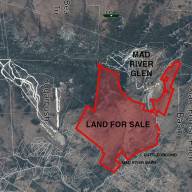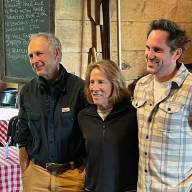Residents, communities, and public officials have made great efforts (many of them successful) to support the permanent conservation of lands for agriculture and for conservation. An example is the Scrag Mountain trail system and town forest in Waitsfield. Another is the perpetual conservation of the Phen Basin in Fayston by the Trust for Public Land, Vermont Land Trust, and the Vermont Housing and Conservation Board. This 2,600 acres is now included in the Camel’s Hump State Park.
The director of the statewide mountain biking group is quoted in VTDigger (“Mountain biking, a fast-growing sport, kicks off its season,” June 7) as a devotee of community-supported stewardship. “The model we’re really trying to establish is community-supported stewardship,” said Nick Bennette, the state association’s executive director. This is an important and welcome commitment, and it should be applauded. In a valley such as ours, community stewardship efforts are well underway and have accomplished a lot.
This mountain biker commitment should extend not only to maintenance and operation of trails, but also to lands not dedicated to mountain bikes. Stewardship is not only about managing uses – it is also about leaving some areas alone.
Most outdoor sports are confined to recreation fields. Mountain biking is different. It occurs in the great outdoors, needs a fast-moving machine, often includes a large number of participants in an event, and sometimes takes place in areas that non-bikers value for solitude, peace and quiet, and wildlife habitat. Mountain biking can sharply conflict with quieter activities such as hiking (particularly with children or dogs), camping, observing wildlife, and bird watching.
Thus, mountain bike groups should work with local conservationists to make sure the mountain bike trails network avoids ecologically sensitive areas, including habitat, endangered and threatened species, wilderness qualities, and water sources. The vast Ecological Protection Zone protected in the Phen conservation easement is such a place.
Recently the Mad River Riders wisely backed away from their proposal submitted to state agencies to construct a trail in the Phen Basin. The land was originally protected by private buyers. State taxpayers helped move the land into the public estate.
The proposal to construct a mountain biking trail was a surprise to many locals. The proposal was slapdash and indicated support from local entities that had not supported it. The proposal would have required 16 stream crossings and the trail would have crossed through the sensitive Ecological Protection Zone in the Phen. Unfortunately, despite local objections, the state agency in the recent Camel’s Hump plan approved the concept of a mountain bike trail within the easement-protected area, a mistake by the state that the Mad River Riders should help correct, since the proposal for a trail originated with them.
The perpetual conservation easement protecting the Phen is clear: Construction of trails for mechanized and motorized activities is not allowed. Only non-mechanized trail construction is allowed.
I have brought this issue up in public forums such as The Valley Reporter and VTDigger, have written letters, have left messages with and emailed Riders’ leadership (no response at all), and have met with state agency staff. I have asked the Riders to help revise the state plan and to state publicly not just that the proposal was withdrawn (the state already considered it inadequate and stale according to my meeting with state officials) but also that the Riders will never propose or support a trail in this area.
With the Riders’ leaders deeply involved in The Valley recreation visioning forum that will be active for the next couple of years at least (a forum funded by state money), members of the public including myself would appreciate a clear, forceful statement that the Phen bike trail proposal, and Phen mountain bike access on existing trails, will not be pursued.
Hundreds of riders ride on existing upland trails in the Mad River Valley on some summer days. Seems OK where planned for – but not everywhere, and certainly not in an area where people and agencies have invested bounteous money to conserve land principally for natural and ecological values.
We don’t need to spend the coming three years deciding whether to support new trails in areas such as the Phen Basin that have already been dedicated to conservation. And we don’t need to start with the assumption that every trail, for hiking or anything else, is a multi-use trail that by definition includes mountain bike use. Let’s leave some areas, such as the Phen, already perpetually conserved, for people who want to walk or hike quietly with young children, who value quiet solitude and wilderness values.
With a commitment to non-mechanized use of the Phen, the Riders would empower community-supported stewardship as professed by the president of the statewide mountain bike association. It’s time to make the vague whispering campaign (“we don’t have plans for the Phen”) into a strong public commitment to other trail users’ of perpetual conservation in ecologically significant areas such as the Phen.
Farquhar, Waitsfield, is the former director, Mad River Path, former president, Friends of the Mad River, former executive director, Vermont Natural Resources Council.












